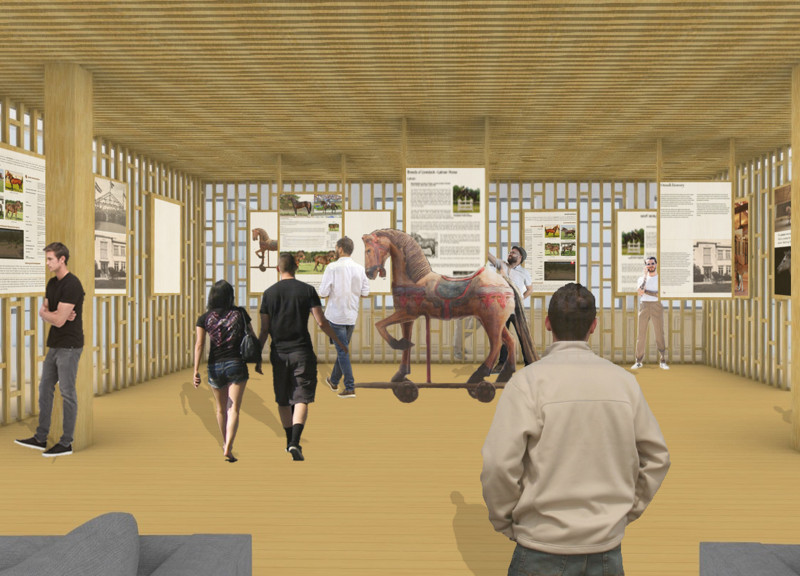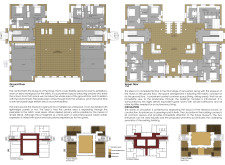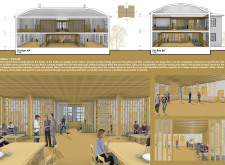5 key facts about this project
The renovation of a historical building employs an approach that emphasizes both preservation and new functionality. Located in a culturally vibrant area, the design is based on the concept of Incremental Growth, consisting of three distinct phases. Each phase builds on the previous one, ensuring the new uses fit well within the existing structure. This plan aims to create a community space that supports diverse activities while recognizing the heritage of the site.
Incremental Growth
The idea of incremental growth focuses on gradual change. This method allows for the careful introduction of new functions without making significant alterations to the historical architecture. The empty spaces generated in the early stages can serve as workspaces and storage areas, providing flexibility as the project develops.
Central Hall
A key feature of the design is the central hall, which will function as the Museum of the Horse. This adaptable space is intended to host events and exhibitions. The design encourages interaction by connecting the inside of the building with the outside. A semi-enclosed exhibit area makes the hall a center for activity, drawing people in and serving as an inviting cultural space.
Upper Floor Development
The upper floor plays an important role in the overall design, adding to the functionality of the museum while providing accommodations. This level features a shared common area with views of the surrounding landscape, along with eight guest rooms that include private bathrooms. Such thoughtful planning enhances both independence and comfort for visitors while maintaining a connection to the larger community.
Circulation and Materiality
The project ensures effective circulation by respecting the original layout of the historical school building. Two entrances create symmetry and facilitate movement between public and private spaces. The choice of materials reflects the building’s heritage, featuring wooden elements, refurbished ceilings, and decorative boiseries in the main hall. These features highlight the craftsmanship of the era while addressing contemporary design needs.
The flexible design of the central hall invites participation and engagement, illustrating the commitment to merging historical aspects with modern functionality in a way that is approachable and welcoming.






















































